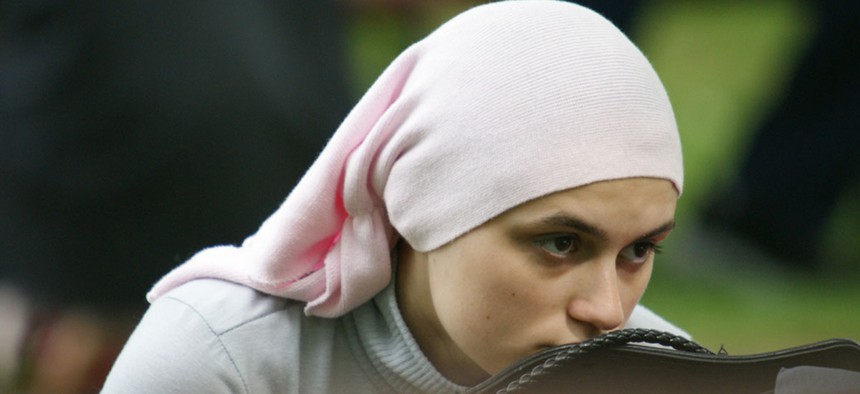Air Force Paper: Women Who Wear the Hijab Contribute to 'Passive Terrorism'
Millions of Muslim women might have something to say about that.
The hijab is much more than a head covering. It contributes to the spread of Islamic extremism—or so says part of a US military white paper that is generating criticism.
As The Intercept reported this week, a paper titled “Countering Violent Extremism: Scientific Methods and Strategies,” issued by the US Air Force Research Laboratory, contains one section describing the hijabworn by Muslim women around the world as contributing to “passive terrorism.”
The inflammatory section is called “A Strategic Plan to Defeat Radical Islam,” and its author is Dr. Tawfik Hamid, a self-described former Islamic extremist and senior fellow at the Potomac Institute for Policy Studies in Washington D.C. As the form of extremism known as Salafi Critics point out that his arguments are unsubstantiated. jihadism spreads, he writes, more women assume the head covering, which he labels “a catalyst for Islamism.”
He continues: “In turn, the proliferation of militant Salafism and the hijab contribute to the idea of passive terrorism, which occurs when moderate segments of the population decline to speak against or actively resist terrorism.”
The failure to actively resist terrorism, he writes, can be considered “a threat to free societies.”
There’s also a chart:

(A screenshot from Countering Violent Extremism: Scientific Methods & Strategies)
The white paper is made up of articles by numerous academics and researchers. It was originally published (pdf) in 2011, but according to a note from the editor in the new version, it was reissued in July 2015 as the “wisdom contained in this paper collection is more relevant than ever.” The Intercept notes that the original was also cited by the FBI in 2014 in its own strategy for combating extremism.
Quartz has reached out to the US Air Force for comment on whether Dr. Hamid’s writings—which represent only a small part of the total document—reflect US military position toward the hijab. This post will be updated with any response.
Dr. Hamid tells Quartz his views refer to “the phenomenon of the hijab,” rather than any single wearer. “When I talk about the hijab, I don’t mean individuals,” he says. “An individual wearing the hijab can be the best person ever.”
Asked how he can separate an individual, peaceful woman who chooses to wear the hijab from his assertion that the head covering contributes to passive terrorism, he says, “Cigarette smoking contributes to the development of lung cancer, but not every single cigarette smoker will develop lung cancer. The contribution to something in medicine does not mean it’s the only factor.”
His argument rests on the claim that, in the past 30 years, there haven’t been instances of Islamic extremism developing somewhere the hijabisn’t common. But the implied causality in that observation is hard to prove. Critics of Dr. Hamid’s viewpoint point out that his arguments, including his belief that young men are motivated to join radical groups because of “sexual deprivation,” have gone unsubstantiated.
“The document as a whole includes some scholars who are serious researchers,” Arun Kundnani, an author and NYU professor who hasstudied counter-radicalization policy, told The Intercept. “However it appears the purpose of this chapter by Hamid is not a genuine investigation of the roots of violence, but rather an attempt to supply national security agencies with bogus surveillance rubrics.”
He added that Dr. Hamid’s section of the paper “should not have been included in any kind of government training material or published research.”
Dr. Hamid’s website says his expertise has been sought by a number of US agencies, including the Department of Defense, suggesting his viewpoint could have an effect on actual US policy. But he says he would never advocate for any society banning the hijab because it would justify a harsh response from Islamic extremists.
The millions of Muslim women who choose to wear the hijab might have a harsh response as well.
(Image via Flickr user Isa Sorensen)



